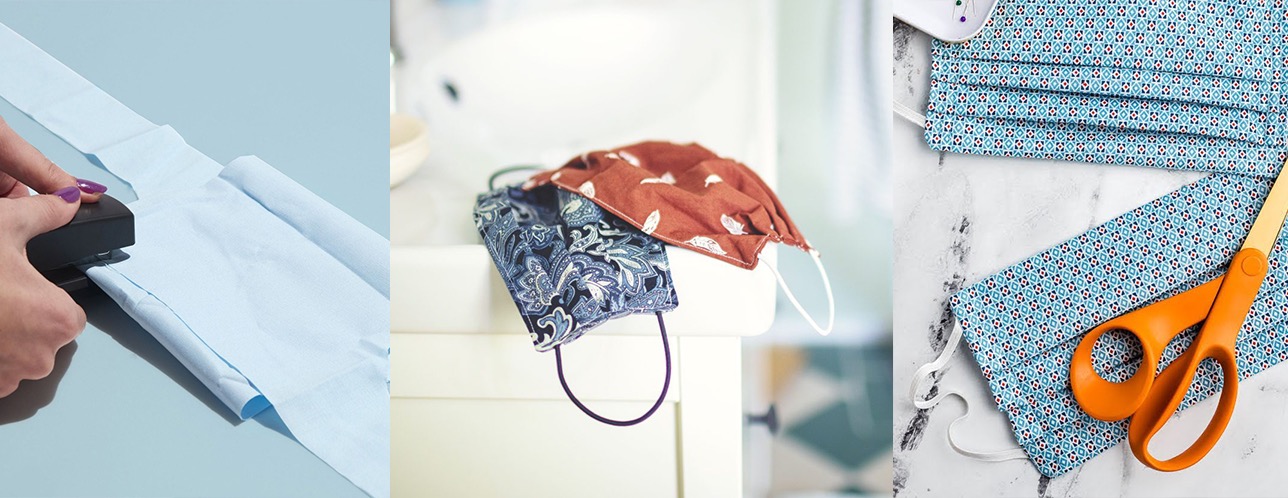Since the outbreak of COVID-19, one item that has constantly been at the forefront of our list of essentials is none other than the box or pack of surgical face masks.
While the Singapore government may have previously discouraged the use of surgical face masks, new discoveries about the virus (such as individuals who may be asymptomatic) have resulted in a change to the guideline with the officials now recommending the use of masks or makeshift coverings like a reusable mask, to help contain and reduce the spread.
While surgical masks are said to be fluid-resistant and are able to filter bacteria more effectively, reusable masks that are made of cloth or paper can still serve as a basic form of protection. In an effort to ensure that the front-liners don’t face a shortage in surgical face masks or N95s, the Singapore government has issued free reusable masks for every Singaporean to use as a precaution if they have to go out during the Circuit Breaker.
Are reusable cloth masks effective?

Although there has been much debate over the effectiveness of a cloth mask versus a surgical mask, the idea is to reduce the risk of the virus spreading especially when there are carriers of COVID-19 who are asymptomatic. Reusable masks that are made of cotton are said to provide between 50% and 60% of filtration efficiency which can help to create a form of ‘source control’ that potentially helps slow down and prevent community transmission of the virus. It suffices to say that a cloth mask is still better than not wearing any mask at all.
Is the government-issued reusable mask sufficient?

If you only have the reusable mask with you, it is recommended that you wear it when you go out. But, most importantly, ensure that you adopt the safe distancing measures and keep good personal hygiene. The concept of standing one to two metres apart from another person next to you takes precedence over mask-wearing and should definitely be something that you constantly practice even with a mask on.
For those that happen to already have a supply of surgical masks, here’s where you can vary the usage of your masks based on the type of activity you’re engaging in. For example, if you’re going for a short walk nearby or at a park, this is considered a low-risk activity and a reusable cloth mask is sufficient. However, in the event that you are partaking in high-risk activities such as taking public transport, going to the supermarket, or buying take-out food, a surgical mask would be more suited.
It also doesn’t hurt to have extra cloth masks handy, especially when you’ve got a little more time to spare to make your own during the Circuit Breaker.
What is needed to create a DIY face mask?
Outer Layer: Reusable bags (e.g. supermarket totes); do ensure that the bags are not made of canvas, cotton, or plastic. Test the fabric under running water to see if they are waterproof.
Middle Filtering Layer (Disposable): Dried wet wipe, baby wipe, floor wipe, or kitchen towel.
Inner Absorbent Layer (Reusable and washable): Thin cotton cloth from t-shirts or wiping cloth.
Additional items needed: Bendable metal strip band, hair tie, scissors, stapler, and masking tape.
DIY Mask Instructions

Tips for mask-wearing
It is important to have the mask fit snugly over the bridge of your nose and under your chin. Always make it a point to tighten the ties so that there are no gaps. Once you have your mask on, ensure you don’t touch the front of it and don’t pull it under your nose, mouth or chin. When you take your mask off, keep it in a plastic bag or Ziploc bag until it can be laundered and wash your hands immediately. Take care to remove your masks only when you are in your homes as elevators and stairwells can be high-contamination areas.
Reusable Mask After-Care
Wash your reusable masks at least once a day with warm water and soap, and wring it gently to dry. Do not use bleach to wash your masks. The mask should also be air-dried but not in direct sunlight as it could make the colour run and destroy the fabric and filtering capabilities.
New Mask Guidelines

An additional DIY mask will definitely come in handy given the new guideline issued this past weekend. From 12 April onwards, all customers visiting supermarkets, convenience stores, pharmacies, and shopping malls are required to wear masks or be denied entry at the door. So, when you are heading out for a supermarket run, do remember to have your masks with you and observe the safe distancing guidelines to prevent unintentional run-ins with the authorities!
😷 KEEP SAFE AND STAY AT HOME! 😷











You must be logged in to post a comment.